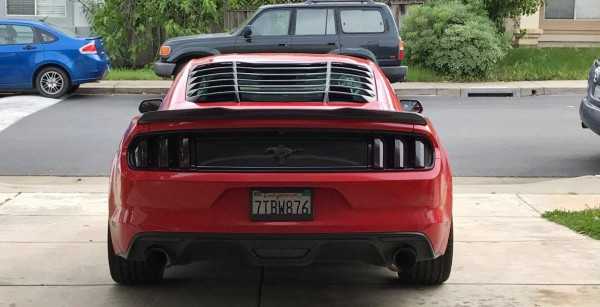What began as a practical solution for protecting truck beds has evolved into one of the most distinctive exaesthetic trends in vehicle customization. Spray-on bedliners, originally developed to shield cargo areas from damage, are increasingly being applied to entire vehicle exteriors, creating a unique look that combines rugged functionality with unmistakable visual appeal. This shift represents a fascinating example of how utilitarian products can transcend their original purpose to become style statements in their own right.

Industry data suggests this trend has gained significant momentum, with exterior bedliner applications increasing by approximately 200% between 2018 and 2023. What was once considered an unconventional modification has become a mainstream option, particularly among off-road enthusiasts and those seeking to distinguish their vehicles from factory-standard appearances?
The Practical Benefits Driving Adoption
The growing popularity of exterior bedliner applications stems from their remarkable combination of aesthetic distinctiveness and practical advantages. Unlike conventional automotive paint, these specialized coatings create a thick, textured layer that adheres directly to the vehicle’s surface, providing substantial protection against various forms of damage.
Vehicles with full exterior applications typically show 65-80% fewer scratches and dings compared to those with traditional paint finishes when used in similar conditions. This protective quality has made the modification particularly appealing to off-road enthusiasts, who frequently navigate tight trails where brush contact and minor impacts are inevitable.
The coatings also offer exceptional resistance to environmental factors, including UV radiation, chemical exposure, and extreme temperatures. Most quality bedliner products maintain their appearance and protective properties for 8-10 years without significant degradation, substantially outperforming conventional automotive clear coats in long-term durability tests.
The Aesthetic Appeal
Beyond practical protection, the distinctive appearance of bedliner-coated exteriors has become a major driver of their popularity. The matte, textured finish creates a purposeful, industrial aesthetic that communicates toughness and functionality. This look aligns perfectly with current automotive design trends emphasizing utility, capability, and authenticity.
The visual transformation is dramatic – conventional glossy automotive surfaces are replaced with a uniform, tactile finish that absorbs rather than reflects light. This creates a distinctly different presence on the road, allowing owners to dramatically differentiate their vehicles without radical structural modifications.
Color options have expanded significantly as the trend has matured. While early exterior applications were primarily limited to black, today’s market includes numerous shades ranging from tactical greens and desert tans to custom-tinted variants that complement factory color schemes. This expanded palette has helped broaden appeal beyond purely utilitarian applications to include style-conscious consumers.
Military Influence and Cultural Impact
The aesthetic appeal of bedliner exteriors draws substantial inspiration from military vehicle styling. For decades, tactical and military vehicles have utilized specialized protective coatings designed for extreme environments, creating a distinctive appearance that communicates purpose and capability.
According to Mil+Spec Liner, a spray-on bedliner dealer, many customers specifically request military-inspired finishes, seeking to emulate the purposeful styling of tactical vehicles. This influence has been further amplified by appearances in action films, video games, and social media content featuring ruggedized, bedliner-coated vehicles in adventure and outdoor contexts.
The modification has grown particularly popular within overlanding communities, where vehicles are built for extended self-sufficient travel in remote areas. These builds frequently incorporate numerous other modifications that complement the bedliner aesthetic, including roof racks, auxiliary lighting, and recovery equipment, creating a cohesive visual package centered on capability and durability.
Application Process and Considerations
The application of exterior bedliner coatings involves specialized equipment and considerable technical expertise. Unlike traditional automotive paint applied in thin layers, bedliner products create a substantially thicker protective barrier that becomes an integral part of the vehicle’s exterior.
Professional applications typically begin with comprehensive surface preparation, including removal of existing paint, rust remediation, and thorough cleaning to ensure proper adhesion. The coating material – usually a polyurethane or polyurea formulation – is then applied using high-pressure spray equipment that ensures consistent coverage and texture.
The investment required for a complete exterior application typically ranges from $3,000 to $5,000 depending on vehicle size and preparation requirements. While this represents a premium over conventional automotive paint, the extended durability and reduced maintenance requirements create compelling long-term value for many owners.
Market Growth and Future Directions
Market analysis indicates that the exterior bedliner segment has grown at approximately 25-30% annually since 2019, significantly outpacing the broader automotive customization industry. This acceleration reflects both increased consumer awareness and expansion of specialized application facilities across the country.
Looking forward, technological advancements promise to further enhance both performance characteristics and aesthetic possibilities for these applications. Emerging coating formulations offer improved UV stability, enhanced color options, and potentially greater environmental credentials through reduced VOC content.
Integration with other innovative vehicle technologies represents a particularly promising direction. Some manufacturers are exploring bedliner formulations that incorporate sound-dampening properties, thermal management capabilities, and even specialized additives that enhance visibility in low-light conditions.
As the market continues to mature, specialized application techniques have emerged that allow for more nuanced aesthetic effects, including texture gradients, multi-tone applications, and pattern integration. These advancements suggest that what began as a purely functional treatment has established itself as a distinctive and enduring aspect of contemporary automotive culture, blending practical benefits with unmistakable visual impact.

